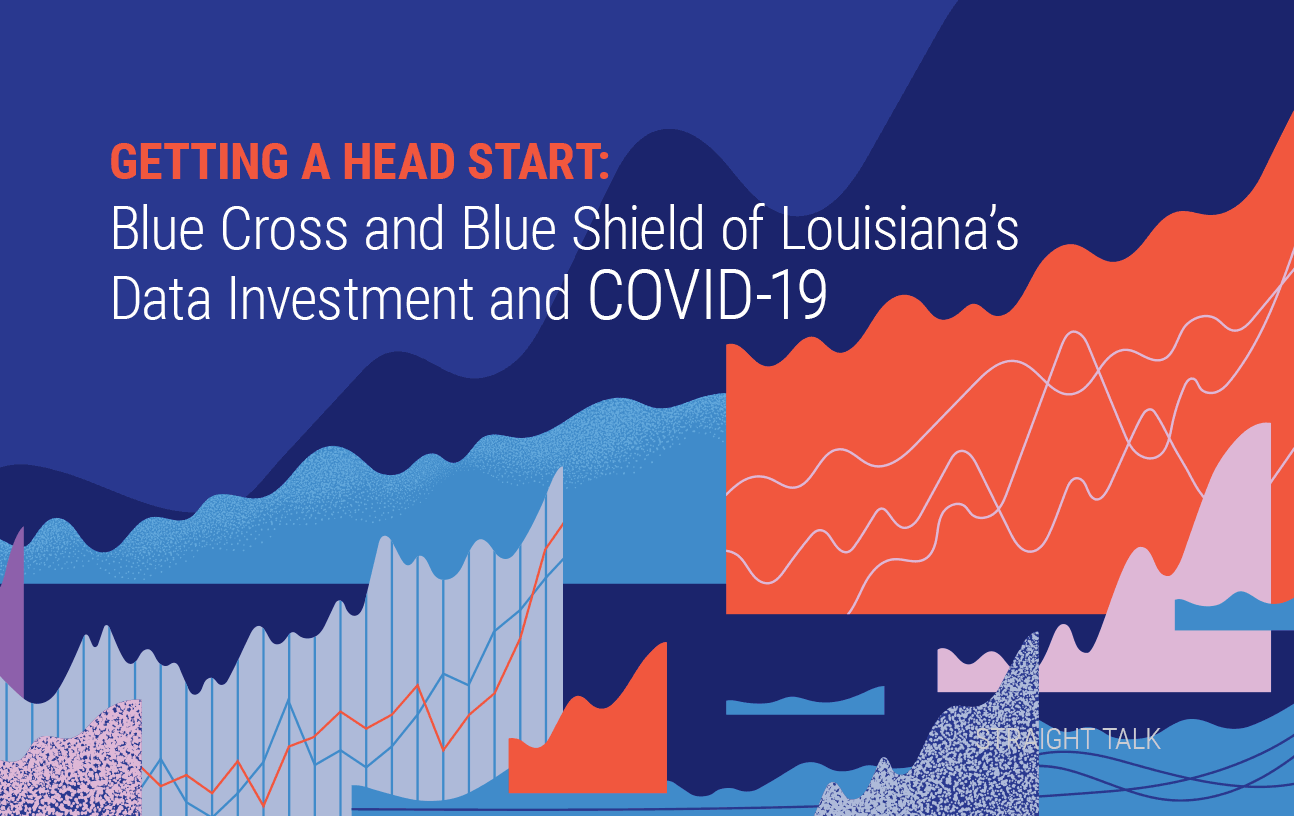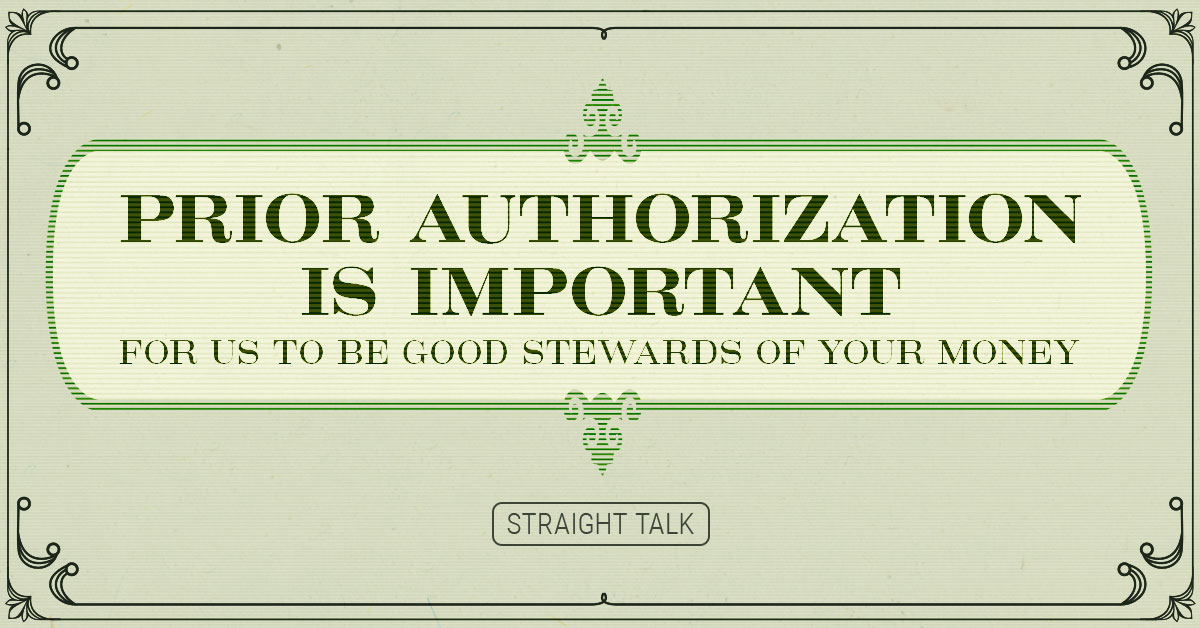The other day, I was lamenting the fact that I haven’t seen a disinfecting wipe container in any store in a few months. I find them VERY handy nowadays for wiping doorknobs and other frequently touched surfaces or using them at the gas station and grocery store. I was just about out of wipes when I popped open a seldom-used cabinet and found a whole new package — NEVER OPENED.
A couple of years ago, with no idea that we’d be battling COVID-19, I stashed those away. I wasn’t “planning for a rainy day;” it was just luck.
But thanks to the talented team of data scientists we have here at Blue Cross, luck isn’t our only method of being prepared and ready to respond to COVID-19.
Using Data to Track COVID-19
About three years ago, in a very purposeful way, our then new CEO Dr. Steve Udvarhelyi came in the door DETERMINED to make Blue Cross an efficient and strong user of the data we already had available. The goal was to use this data to help our members get and stay healthy. New investments in talent and resources came IN quickly – our first chief analytics and data officer and a unified Enterprise Data Warehouse. OUT went lots of old, legacy systems that never talked to each other and basically hung around because it was easier to just “let it ride.” In came big-time data security investments and training, so everyone could feel confident in our ability to protect their private healthcare information.
And the return on that investment is BIG right now.
First, you’ve seen a lot in these pages about how we’re using advanced analytics and innovative technologies to wrangle the explosion of data we have available to get the right information, at the right time, with the right level of insights to make positive changes in our members’ lives. That includes how we’ve built predictive models designed to assist our network healthcare providers and our in-house clinical team as they help members avoid hospital stays, emergency department visits or even complaints!
Public-Private Partnership
Now we are using this capability to help the state, in particular the Louisiana Department of Health (LDH), deal with this crisis. Dr. Steve, our CEO, put it this way:
“Using cutting-edge technology for timely and precise decision-making and action, our work with the Louisiana Department of Health is monitoring and tracking the spread of the virus to help Louisiana flatten the curve and keep everyone as safe as possible.”
Our data and analytics capability is turning out to be VERY useful for everyone in Louisiana, not just Blue Cross customers. The Blue Cross team created the Louisiana COVID-19 Outbreak Tracker, which has given the state a robust platform to organize and analyze our data, along with state and other private data sources. Since it includes Medicaid patients and Blue Cross customers, you’re talking about two out of every three people in the state!
We’re able to share this data securely and protect peoples’ privacy through Business Associate and Data Use Agreements that limit access to and use of the data.
Beginning in early March, our data folks, led by our Chief Analytics and Data Officer Somesh Nigam, have built interactive tools for LDH (or the state) that allow them to track the COVID-19 outbreak in amazing detail. It’s part of our platform Pi, which stands for Performance Insights. The dashboard lets LDH look at all of the sources of data in one place, with easy toggles to switch views, data points and more.
The tracker is especially useful because of its real-time capabilities, which includes admissions and discharges from hospitals, clinical conditions, medical service authorizations and more. It also covers hospital bed and ventilator availability.
State health officials then can model rates of hospitalization, death, hospital capacity and allocation of crucial medical supplies—and do so for each of the state’s nine healthcare regions. The goal? Help slow the spread of the virus and best use available resources to treat those with the disease.
The folks at LDH seem very happy with the tools and our collaboration:
“Thanks to this impressive Blue Cross tool and the experts behind it, we can combine real-time data with the knowledge Blue Cross has developed as it serves Louisiana residents, understanding we are distinct to the U.S. norm,” said Jeanie Donovan, policy director of the Louisiana Department of Health.
We leading other Blues plans down this same path; hoping they can help their own states fight back against this disease.
And we think we can do more.
What if we could predict your likelihood of becoming infected? What if we could predict who is most at risk from COVID-19? What if we could reach out to those at highest risk and help them avoid a bad outcome?
It makes sense if you think about it. We already have built predictive models for things like in-patient hospitalization and demonstrated accuracy above other commercially available models.
As we learn more about how COVID-19 spreads, and how different risk factors determine the outcomes of infected patients, we may be able to forecast who is most likely to catch COVID-19, and perhaps more accurately predict how they will respond to treatments once they have the disease. We know this fight won’t end once the stay-at-home order is lifted, so the more we learn today, the better we can fight this disease down the road.
The higher the quality and accuracy of the data we receive, the more accurate our forecasting models become; we know that from experience. Now we are applying that three years of investment, hard work and discipline where it’s needed the most. And these tools are guiding the REAL answers to questions like:
“How’s Louisiana doing in turning back COVID-19?”
“Which areas of the state are doing better than others?”
“Why?”
and the all-important one: “What’s going to happen next?”
Which feeds right into how we get life more back to normal.
Straight Talk is, thanks to some very smart people making a big investment in technology, experts, time and money three years ago, we are all benefitting in the battle against COVID-19. And I’m very proud to be a part of the organization that wasn’t afraid to look ahead.





Leave a Reply